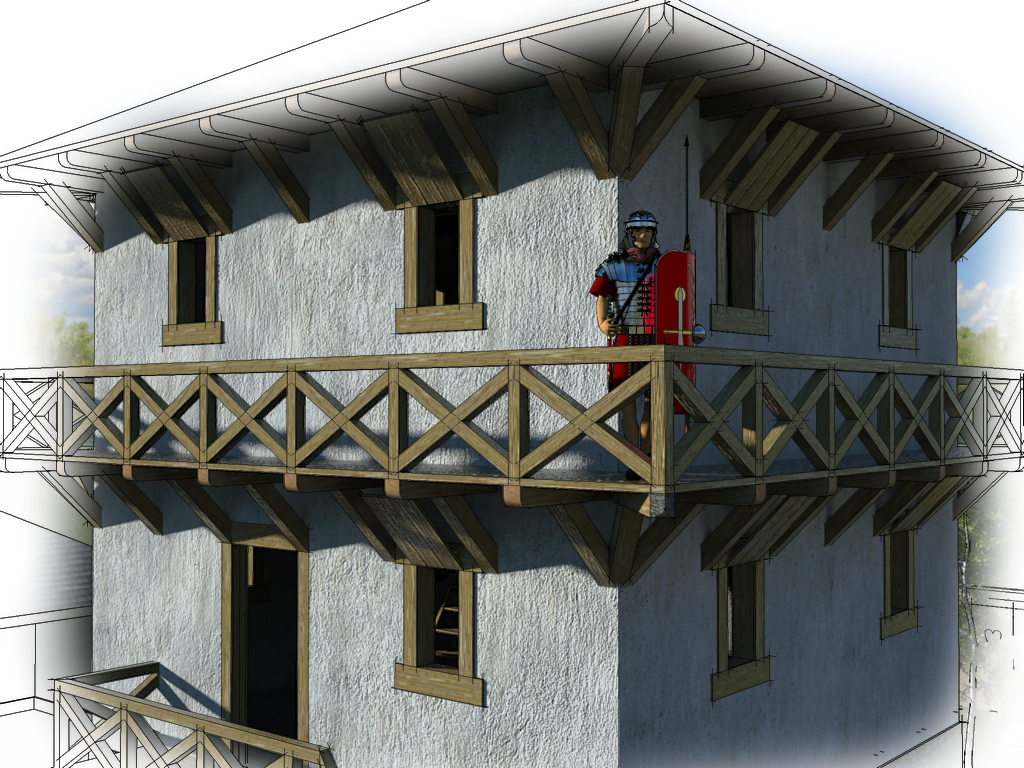Quick & Easy "Dennis Method" renderings [TUTORIAL]
-
Swindel - clever thinking.
-
Hey Dennis. I've made a basic tutorial for GIMP, using your method a few seconds ago. It's only the very basics, after you've done the tutorial you have to play around with the burn tool to make it look artistic. But how do i post the video here? It's .avi

Thanks
-
here is a thread on "how to post a video". I'm looking forward to see what you came up with.
http://forums.sketchucation.com/viewtopic.php?f=79&t=10103 -
The video isn't flash, and it isn't on youtube either. Can you just PM me your email adress? I'll send you it

-
@dennis_n said:
In short, you will export 2 images from your SketchUP Scene: a) Hidden Line Black & White image and b) textured one with shadows.
Wonderful to "meet" THE Dennis at last. I have a question--not to make this quick and easy technique too complicated: Does the "textured one with shadows" have edges showing, in this two-image version?
Here is a re-posting of a pdf that I found here on the forum (or somewhere), if I may be so bold:A Dennis Technique pdf (three-image version)
Thanks for the great ideas, Dennis.
Peter
-
the textured one with shadows has no lines. theoretically it is your paint in the watercolor. lines are pencil. Artists do them separately, so they don't line up exactly.
Did I answer the question? -
Yes, Thank you!
-
Thank you for posting this tutorial!
I've had SU since the "at last" days but just now getting back into it. I spent pretty much the whole day yesterday experimenting with this method and variations of it. It's a fun and creative way to work!
Robert
-
i have a question, how do you get trees like the ones in your images. in particular the ones with just a black tree outline like the ones in this image you posted
is the tree background added in photoshop or are they models as well? they look gorgeous
-
those are 2d trees in SU. Their outline is a big help if you want to fill it in PhotoShop. Just use the bucket tool in PS to give it a color.
Did I answer your question? -
I don't really know how to use Gimp but this would work in there right?
-
im startin in sketchup and this is a great tutorial, easy to follow and great results
thank you very much
-
Seems your site is extremely devaluated by the "Top screen publicity"!

It's very hurting for the pleasure of the eyes!
I don't understand that for a firm who promote artistic feeling!
-
thank you for the pointer.
To tell you the truth, I was focusing on architecture component of my business last couple years. The rendering part really needs more of my attention. -
Thanks Dennis!!!
That is really cool!! I was wondering if there was a way to do this (that you know of) in a program such as Gimp instead? Not all of us can afford Photoshop, after all! Thank you!
Crankston Shnord
-
Hi Crankston,
With Gimp, you basically do the exact same steps as with PS (I do not have PS either). One thing maybe; you need to add a transparency channel to your top (B&W) layer as Gimp does not seem to add it automatically.
I made this one - a pdf for a presentation I made the other day - with Gimp (although obviously not as artistically as Dennis and used a rendered image instead of a raw SU export and also I did it somewhat differently)
https://docs.google.com/viewer?a=v&pid=explorer&chrome=true&srcid=0ByaU4EfzYOTSOWI2NjhlYTEtMTYyMS00NjQwLTlmMjQtNDZlM2Q2ZmQ3NmZm&hl=en
and also this one - where I kept the linework on the rendered image as well

-
Thanks!! I am somewhat new to Gimp, but I will give it a whirl later and see how it works.
-
Great post. Had always wanted to know how these renderings from sketchup were done!
-
Dennis,
The one thing I'd like to add that is a game changer is using layer mask in Photoshop. There is no need to ERASE anything and lose it forever. By using the mask you can reveal what is below and if you don't like what you revealed you just switch the color of your brush to white instead of black and paint on the layer mask and you reverse the technique. You can change the opacity and flow of the brush to give all sorts of effects.
Hal
-
An elegant simplicity to your technique, Dennis, with a great effect. All too often, at the exploraty stage, clients get stuck on the hard edges or overly 'realistic' aspects of a model, which stops them entering into the spirit of the proposal. Your technique, without being overly labour intensive, gives them a way in. Thank you for sharing your creative thinking

Advertisement







